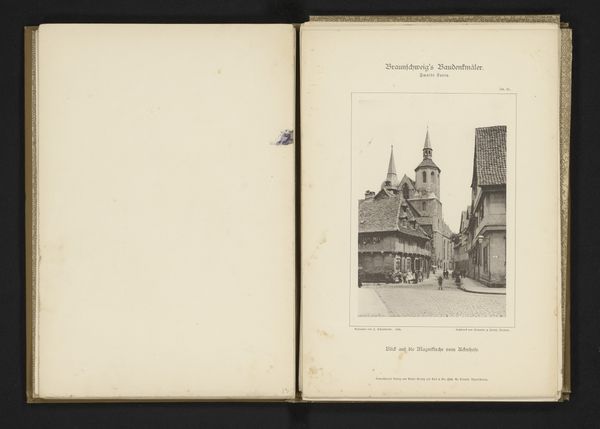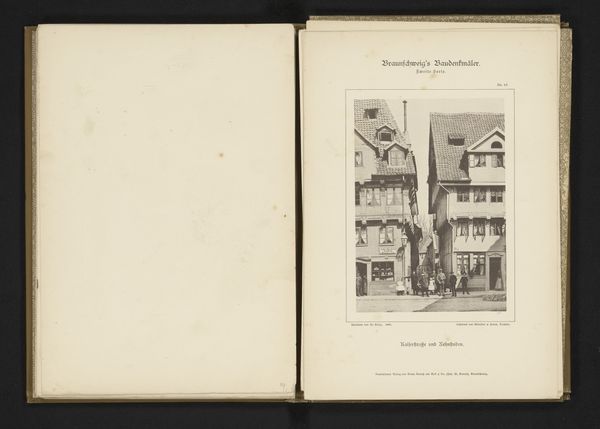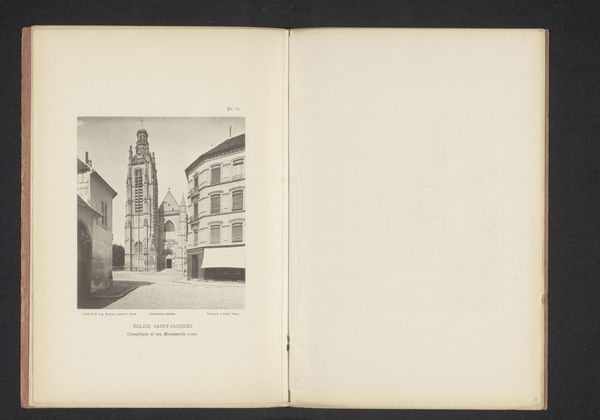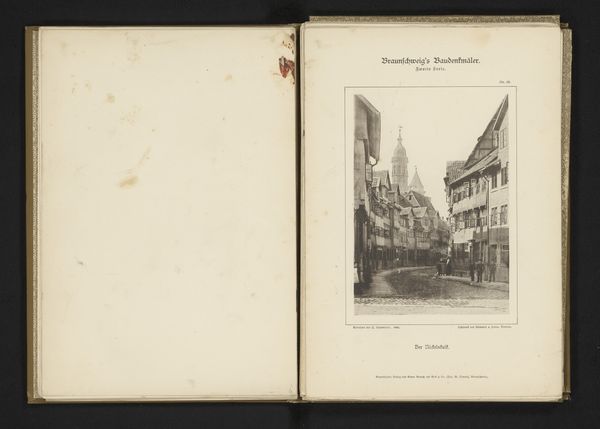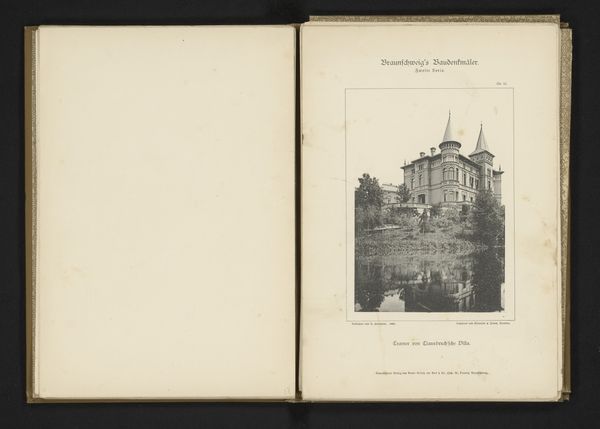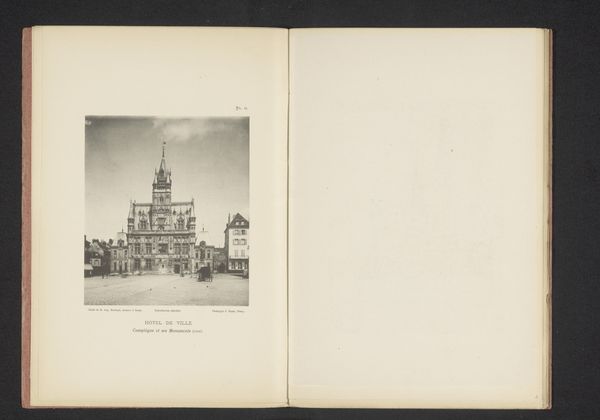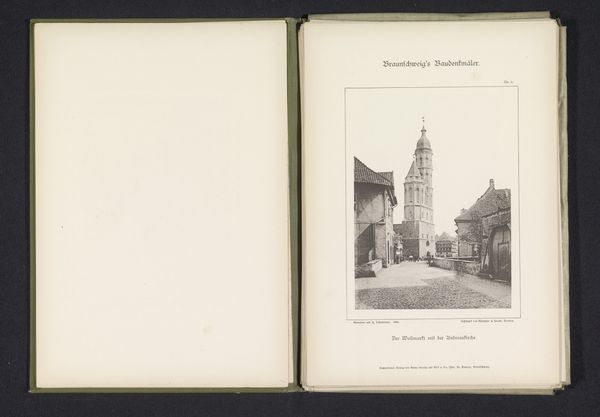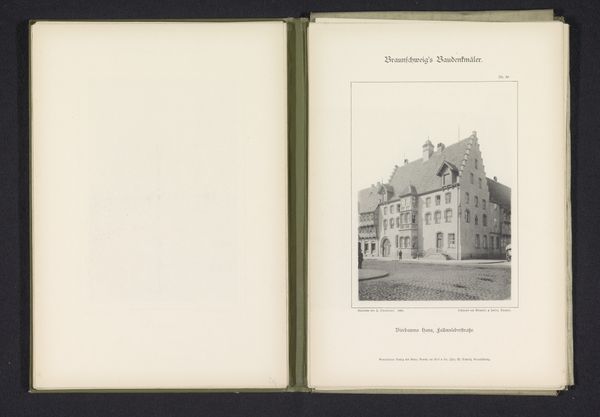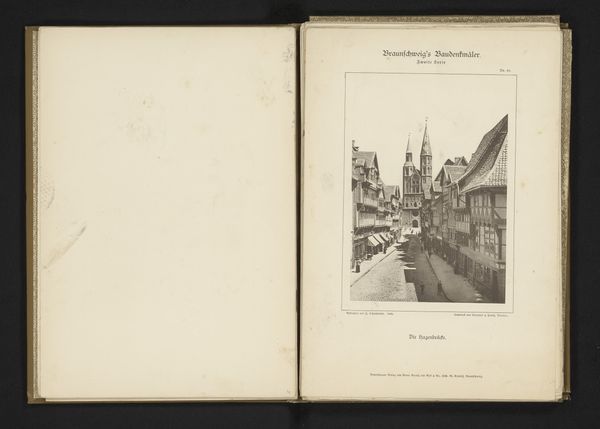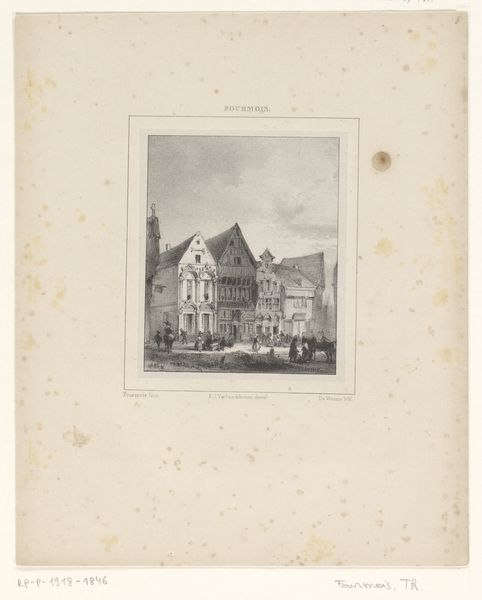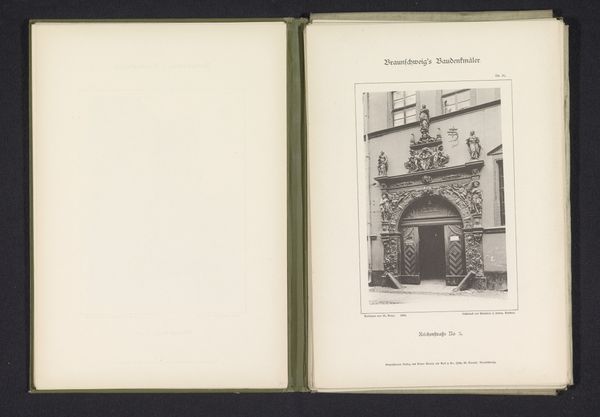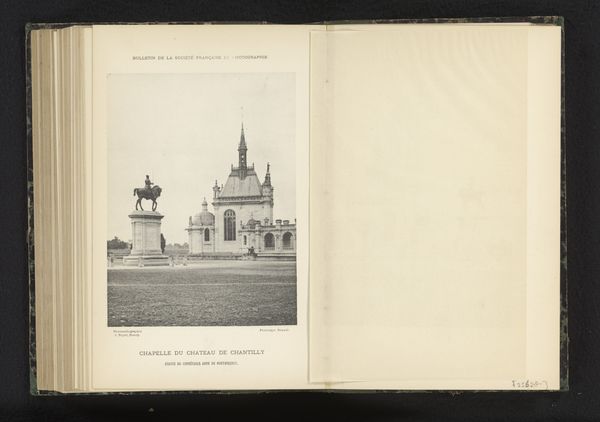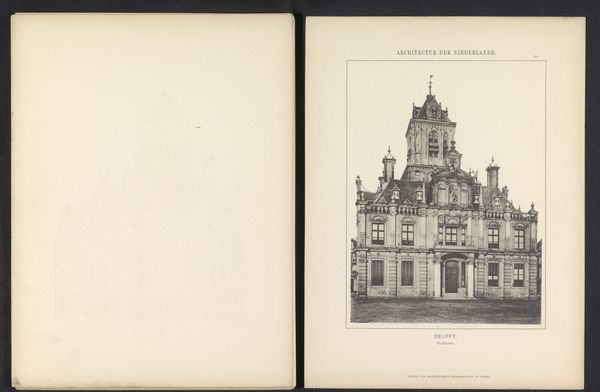
print, photography, albumen-print
# print
#
german-expressionism
#
photography
#
cityscape
#
street
#
albumen-print
#
realism
#
building
Dimensions: height 155 mm, width 106 mm
Copyright: Rijks Museum: Open Domain
Curator: Looking at this 1893 albumen print, J. Schombardt captures the Kaiserstrasse in Braunschweig. What strikes you first about this image? Editor: There's a stillness, almost a hush. Despite it depicting a city street, it feels remarkably serene. The soft sepia tones and sharp focus give it a quality that feels removed from the everyday hustle, though it could use a bit more contrast for definition. Curator: That stillness is interesting, especially considering the context of late 19th-century Germany. This streetscape wasn't just architecture; it represented a society rapidly changing under industrialization and burgeoning nationalism. The image almost romanticizes urban life even as it embodies the rigid class structures of the time. Note the placement of individuals; their size, their spacing. Editor: Right. The albumen process itself speaks to labor. Each print was meticulously produced. I’m thinking about the embodied work involved, and how photography became both a mode of documentation and, simultaneously, an industrialized object of consumption for a rising middle class. The materiality carries socio-economic information, doesn’t it? Curator: Absolutely. The print circulated within a culture grappling with identity, technology, and representation. Also, observe the choice of perspective—the street's alignment and angle. Does that invite you in, or is there a sense of being kept at bay? Whose gaze is really being prioritized in this image? Editor: It is very composed. From a material standpoint, that surface has been consciously crafted, it seems less spontaneous. Yet the architecture is raw; you see details in the brick, the wear and tear. And that juxtaposition tells me something about class divisions at the time. Curator: Precisely. Considering German Expressionism was on the horizon, which aimed to express subjective experience rather than objective reality, it would seem Schombardt, whether intentionally or not, shows us how this Kaiserstrasse and others became settings for societal shifts, visible yet obscured within the seemingly neutral cityscape. Editor: This photograph has me rethinking my perception of seemingly simple snapshots from the past. It demonstrates how intertwined class, labor, and consumption truly are in photographic practice, particularly when we're thinking about art that circulated as consumer objects. Curator: Agreed, thinking about production can enrich a photograph that seemingly freezes a single place and moment in time.
Comments
No comments
Be the first to comment and join the conversation on the ultimate creative platform.
